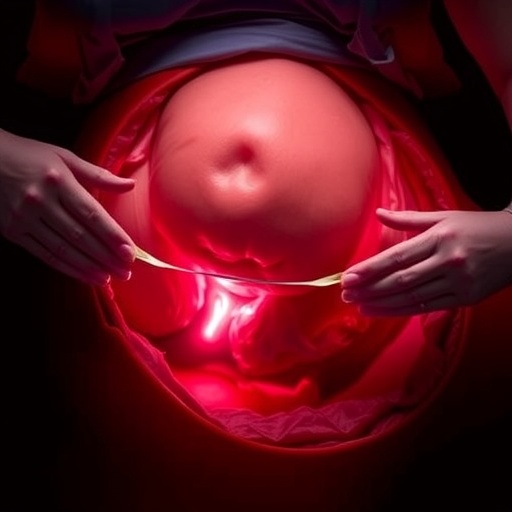Perfusion in the human placenta is an important physiological phenomenon which shows the placental conditions. The magnitude of placental perfusion can be evaluated by 3D power Doppler and contrast-enhanced MR images, but the direction has been hardly indicated. The computational model of the villous tree developed in this study will help to indicate the direction and the mechanical properties of the villous tree.
The villous tree in the human placenta has the blood vessels for the fetal blood circulation while the maternal blood flows into the intervillous space, the surroundings of the villous tree. The stem villi, the main support of the villous tree, have contractile cells along the longitudinal axis of the branch, and contract. It has been speculated that that the contraction would contribute to the blood circulation in the placenta, but the displacement caused by the contraction has been hardly been predicted or measured.
The computational model developed in this study is composed of two parts: (1) stem villi, based on the size and branching pattern previously reported and (2) the surroundings of the stem villi, one continuum because the shape of the villi and the intervillous space are complicated. In the computation, it was assumed that the contraction indicated the axial direction of the branch in the stem villi, and the displacement caused by the contraction propagated in the surroundings of the stem villi.
The results in the computation showed that the displacement would be helpful for blood circulation in the placenta even if the mechanical properties of the surroundings were changed. Such robustness in the blood circulation agrees with previous reports.
If the mechanical properties modulated as the displacement in the computation agrees with the magnitude of the perfusion, the placental condition as well as the direction of the perfusion can be estimated.
###
For more information about the article, please visit https://benthamopen.com/FULLTEXT/TOBEJ-11-36
Reference: Kato Y. (2017). Villous Tree Model with Active Contractions for Estimating Blood Flow Conditions in the Human Placenta, The Open Biomedical Engineering Journal
Media Contact
Faizan ul Haq
[email protected]
@BenthamScienceP
http://benthamscience.com/
http://dx.doi.org/10.2174/1874120701711010036
############
Story Source: Materials provided by Scienmag




